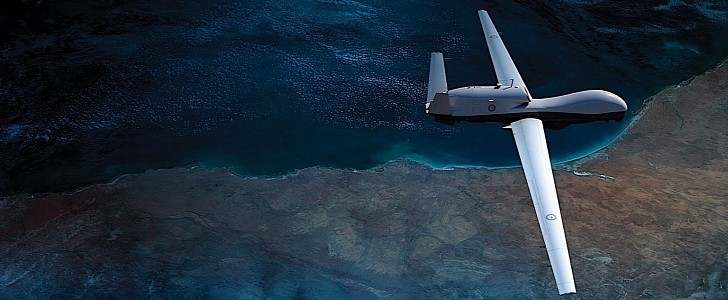Although incredibly good at their job, military drones are not particularly fond of working alongside aircraft operated by humans who are actually onboard said aircraft. They don’t like that because, well, they generally don’t come equipped with the hardware that would allow them to safely fly in a shared environment.
Such hardware is generally known as sense and avoid, and it is designed to do exactly that: detect what’s happening around the drone, and if need be move it out of the way autonomously to avoid collisions.
Military drones don’t usually come with sense and avoid simply because up until now they’ve been lone killer wolves raining death and electronic surveillance from above. But as the needs and expectations of the military shift, they’ll kind of have to mingle.
With that in mind, the U.S. Navy, Northrop Grumman, and a joint venture between L3Harris and Thales called Aviation Communications & Surveillance Systems (ACSS) have been working for the past five years in coming up with a decent sense and avoid system.
The technology is meant for the MQ-4C Triton autonomous drone, and if successful it will allow the machine not only to fly alongside other aircraft, but also take off and land “out of almost any airfield or airport in the world, in full compliance with current and emerging aviation regulations around the globe.”
The Triton had its first flight in 2013, and just a small number of them are currently deployed by the U.S. Navy and the Royal Australian Air Force. Derived from the Global Hawk, it was designed with a wide range of missions in mind, from maritime ISR patrol, signals intelligence, search and rescue and communications relay.
The main thing going for this drone is the fact that it can stay in the air for 24 hours at a time, an altitudes of more than 10 miles (16 km), and can cover distances of up to 9,400 miles (15,100 km).
The companies involved did not say how long it will be before the prototype of the system will be ready for testing.
Military drones don’t usually come with sense and avoid simply because up until now they’ve been lone killer wolves raining death and electronic surveillance from above. But as the needs and expectations of the military shift, they’ll kind of have to mingle.
With that in mind, the U.S. Navy, Northrop Grumman, and a joint venture between L3Harris and Thales called Aviation Communications & Surveillance Systems (ACSS) have been working for the past five years in coming up with a decent sense and avoid system.
The technology is meant for the MQ-4C Triton autonomous drone, and if successful it will allow the machine not only to fly alongside other aircraft, but also take off and land “out of almost any airfield or airport in the world, in full compliance with current and emerging aviation regulations around the globe.”
The Triton had its first flight in 2013, and just a small number of them are currently deployed by the U.S. Navy and the Royal Australian Air Force. Derived from the Global Hawk, it was designed with a wide range of missions in mind, from maritime ISR patrol, signals intelligence, search and rescue and communications relay.
The main thing going for this drone is the fact that it can stay in the air for 24 hours at a time, an altitudes of more than 10 miles (16 km), and can cover distances of up to 9,400 miles (15,100 km).
The companies involved did not say how long it will be before the prototype of the system will be ready for testing.








